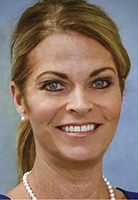
President's Corner
Progress Over Perfection
BY KRISTI WILSON/
School Administrator, February 2021

As AASA president, I have had the opportunity to address gatherings that included business and industry leaders and education professionals from Arizona to China. It is most inspiring to see an entire community unite around a common goal. Most recently, I spoke to a diverse group about the value of collaboration and what it offers to the community.
The calls for change in public education aren’t new. Leaders have for years been reimagining learning spaces, repurposing for better learning outcomes and challenging the status quo with the goal of a more engaged community of learners.
Despite pressure from some for a complete restart, the return to the pre-COVID-19 status quo in education will be nearly impossible. Consequently, we must pay close attention to what is working for students now, what parents are telling us they need as they become more engaged in their children’s learning, and what we can learn from this entire experience as we work together to reimagine learning going forward.
We don’t yet know the overall effect remote instruction has had on student achievement. At the same time, we are in the middle of trying to assess why so many students have left our school districts. Of the 1.1 million students who reside in Arizona, 50,000 aren’t currently enrolled in public schools. Parents who are more advantaged are turning to private school options, hiring tutors and relying on micro-schooling options or pandemic pods to fill in gaps.
The silver lining for some school leaders and teachers who have adapted to the demands of remote learning is that they have been able to identify new strategies to engage parents and students. However, an unanswered question is whether these remote options will supplement or replace traditional public schools moving forward.
We must continue to respond to the varying needs of parents and students. Some will prefer remote instruction while others will favor a return to the traditional in-person method. Our role is to assess the options, create new possibilities and collaborate to meet the needs of those we serve.
As we move forward, we must strive for progress over perfection while we continue to focus on what matters most: meeting the needs of our students and staff, our parents and our entire community of learners. We do this by asking questions such as “What is working well? What is not working?” We create an environment where long-standing assumptions about when, where and how instruction occurs can be challenged by asking respectful questions and at the same time nurturing a culture of collaboration, trust and learning.
We have become accustomed to being flexible. We have gotten better at using the moment to create new possibilities by working together and asking these questions.
The demand to do things differently will continue, and educators will continue to work tirelessly to respond. What can emerge is permanent change and better outcomes grown out of a response from parents, teachers and students.
Imagine that we never return to the archaic confines of the traditional K-12 school schedule. Picture all the barriers that inhibit access to equality, such as when and how students learn, and how we can overcome those barriers. Put it all on a blank canvas and dream a bit. Now is the time to reimagine with your stakeholders, then challenge yourself as a leader to put those dreams into action.
KRISTI WILSON is AASA president in 2020-21. Twitter:
@KwilsonBESD33